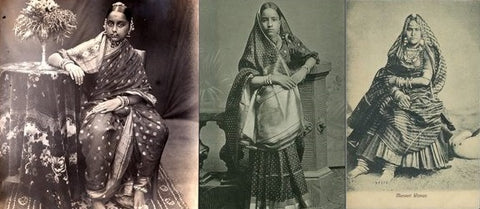HISTORY OF BANARASI SAREES

A Banarasi saree is a saree made in Varanasi, an ancient city which is also called Benaras/Kashi/Banaras. During the Mughal period around the 14th century, the artisans from banaras started making their presense by developing unique and complicated silk brocades using the gold and silver zari threads. Banarasi weaving started getting more recognition and developed expertise during the 18th and 19th century. These sarees are among the finest sarees in India and are known for their gold and silver brocade or zari, fine silk and opulent hand weaving. The sarees are made of finely woven silk and are decorated with intricate design, and because of these engravings, banarasi silk sarees have made a prominent place and flourished in the market.
Their special characteristics are Mughal inspired designs such as intricate intertwining floral and foliate motifs, kalga and bel, a string of upright leaves called jhallar at the outer, edge of border is a characteristic of these saris. Other features are gold work, compact weaving, figures with small details, metallic visual effects, pallus, jal (a net like pattern), and meena work.
The banarasi sarees are often part of an Indian bride's trousseau.
Depending on the complexity of its designs and patterns, a saree can take from 10 days to a month and sometimes up to six months to complete. Banarasi sarees are mostly worn by Indian women on important occasions such as when attending a wedding and are expected to be complemented by the woman's best jewellery.

